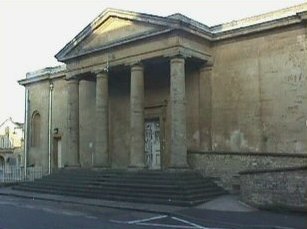
GO TO
TOWN COUNCILLORS
names and addresses
TOWN COUNCIL
WEBSITE
(archive)
LOCAL
CHIPPY NEWS
IS NOW HERE

All phone numbers on this site are code unless shown otherwise.
OTHER CHIPPY WEB SITES
Comments, Ideas,
Criticisms, Articles
Finding us
A "secret" road
Description
Map of Chippy
Stay in Chippy
Stay nearby
Holiday Cottages
Things to see
Chippy's Pubs
Pubs Nearby
Restaurants
Some History
LOCAL
NEWS PAGE
LOCAL WEATHER
STATION
TOWN INFO
Census Info
BUS & RAIL
CLUBS & SOCIETIES
BUSINESS DIRECTORY
OUR MP
LOCATIONS
DRINKING/EATING
Visit the
Theatre Website

CATCH UP WITH
PREVIOUS
ARTICLES
|
|
| THE TOWN HALL |
|

 Our Town Hall, a proud symbol of the days when Chipping Norton was a Borough still dominates the heart of the town. With recent refurbishment it looks to be used even more as a popular meeting place for all kinds of events.During its 161 years it has seen many changes. It was originally built on arches with the entrance to the main hall and the Council Chamber up the broad flight of steps on the eastern side. Beneath were four lock-up cells for prisoners of the Borough as well as space for a weighbridge and fire engine. Until the opening of the railway the weighbridge played an important part in the economy as coal was brought from Banbury by cart and weighed before delivery. The poultry and butter market was held here on Wednesdays.
Our Town Hall, a proud symbol of the days when Chipping Norton was a Borough still dominates the heart of the town. With recent refurbishment it looks to be used even more as a popular meeting place for all kinds of events.During its 161 years it has seen many changes. It was originally built on arches with the entrance to the main hall and the Council Chamber up the broad flight of steps on the eastern side. Beneath were four lock-up cells for prisoners of the Borough as well as space for a weighbridge and fire engine. Until the opening of the railway the weighbridge played an important part in the economy as coal was brought from Banbury by cart and weighed before delivery. The poultry and butter market was held here on Wednesdays.